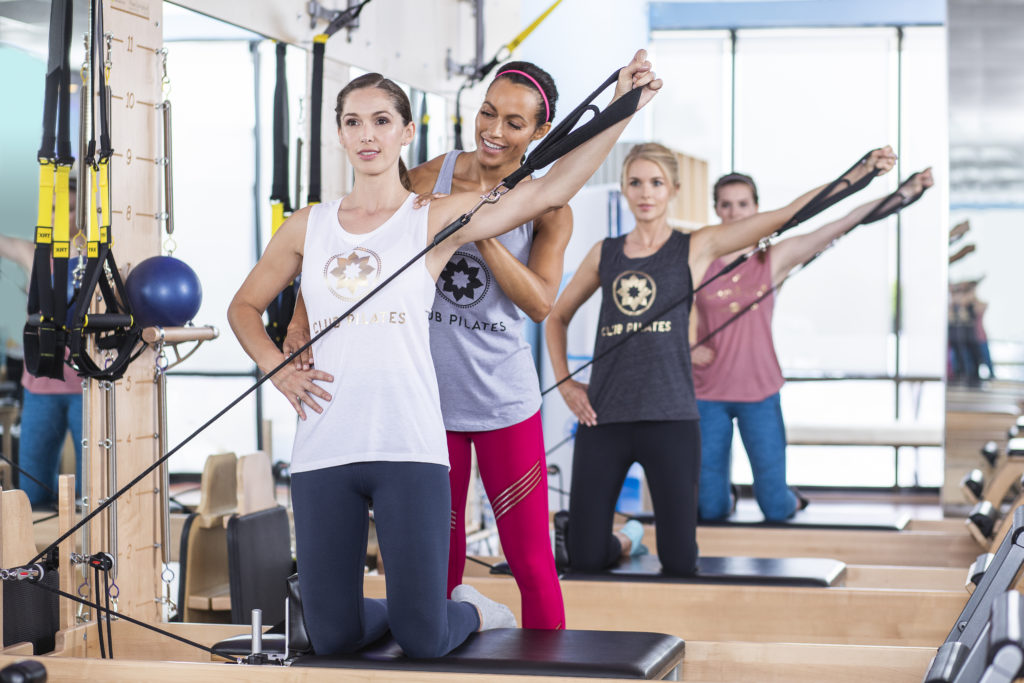Many women know to use precaution and modifications when exercising throughout their pregnancy, but those modifications shouldn’t stop once the baby is born! Many injuries can and do occur in the months following the child’s birth if women push their still adapting bodies too strenuously. Most doctors suggest recovery times between 6-8 weeks to most new mothers, however, the recovery times and modifications go far beyond that. It is great to utilize Pilates for postpartum women to benefit from a safe recovery of specific fragile muscle groups incorporated with pregnancy. Three very common issues postpartum women need to be aware of is a diastasis recti, joint injuries, and pelvic floor dysfunction.
A diastasis is a separation of the rectus abdominis, or the “six-pack” abdominal muscles, which naturally occurs during pregnancy to allow for the ever-growing baby to inside. However, it doesn’t just disappear after the baby is born and can remain for 6 months or more post-pregnancy. Pilates specifically trains the “inner unit” or transverse abdominis and pelvic floor muscles which lie beneath the diastasis recti to assist in closing up this space! Women should avoid open kinetic chain positions, and forward flexion exercises, such as crunches with both feet off the ground until the diastasis has closed up. Quadruped, kneeling and other core stabilizing positions are used by Pilates instructors to assist in proper muscle activation patterns in their post-partum clients to encourage the closure of the diastasis.
- Pilates specifically assists in the improvement of some common issues post-pregnancy: Diastasis, Pelvic floor instability, and hormone imbalances effects on joint stabilization
- Club Pilates instructors specialty training includes modifications for women throughout and post-pregnancy.
- Small group training is supportive to women postpartum both emotionally and physically to provide more personalized attention and modifications.
Joint laxity and joint injuries are unfortunately very common in postpartum women. As the hormone relaxin pumps through the body during pregnancy to loosen and ready the body for birth, it continues running through the body for up to 5 months post-baby. During that time joints are less stable, leaving new mothers prone to balance and joint issues, or even new injuries during that time. Pilates focuses on stability, balance, and coordination throughout the body to strengthen joints. Pilates programs are specifically designed to move the body in all planes of motion, having a positive effect on joint balance and stability in new mothers.
Probably the most prevalent issue for new moms is pelvic floor dysfunction. This can plague women for years after giving birth if the pelvic floor is not re-activated and rehabilitated. Pilates teaches women how to connect to these muscles through breath and coordinated movements in a low to no-impact environment which is key to pelvic floor rehabilitation.
Katie Mann is the owner and operator of four Club Pilates studios in San Diego County. With a B.S. in Exercise Physiology from Ithaca College and over 20 years in the fitness and wellness field, she brings a wide baseline of knowledge and certifications to her clients and teacher trainers. As a Master Trainer for Club Pilates, as well as ActiveMotion Bar and Barre Above, she shares that knowledge hosting trainings and certifications for the upcoming generation of instructors and trainers.
| Try a FREE Intro Class! |



